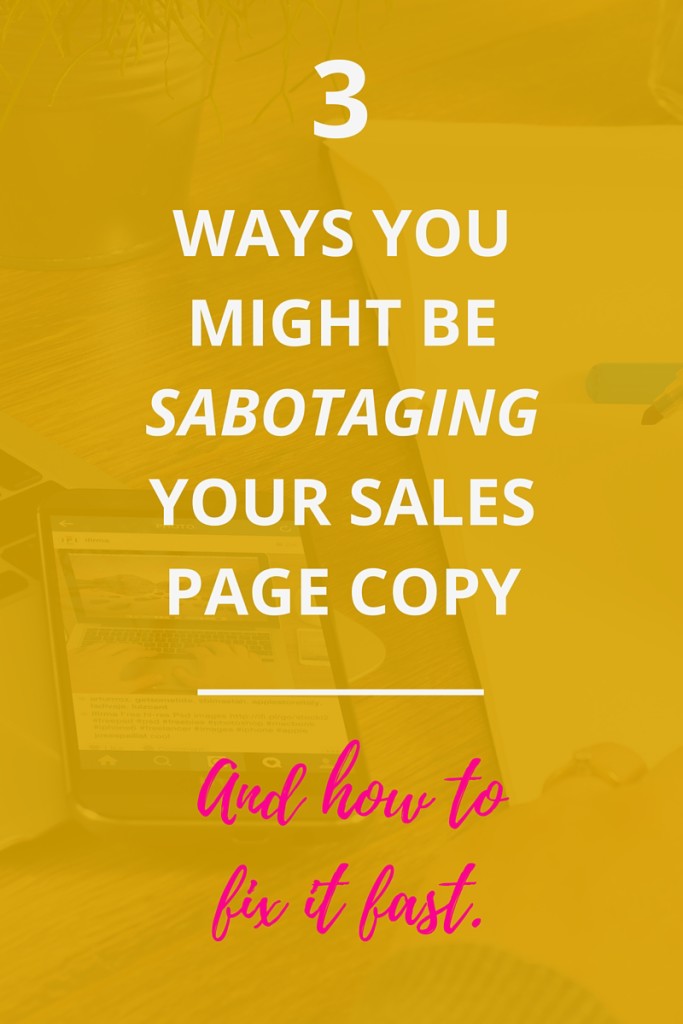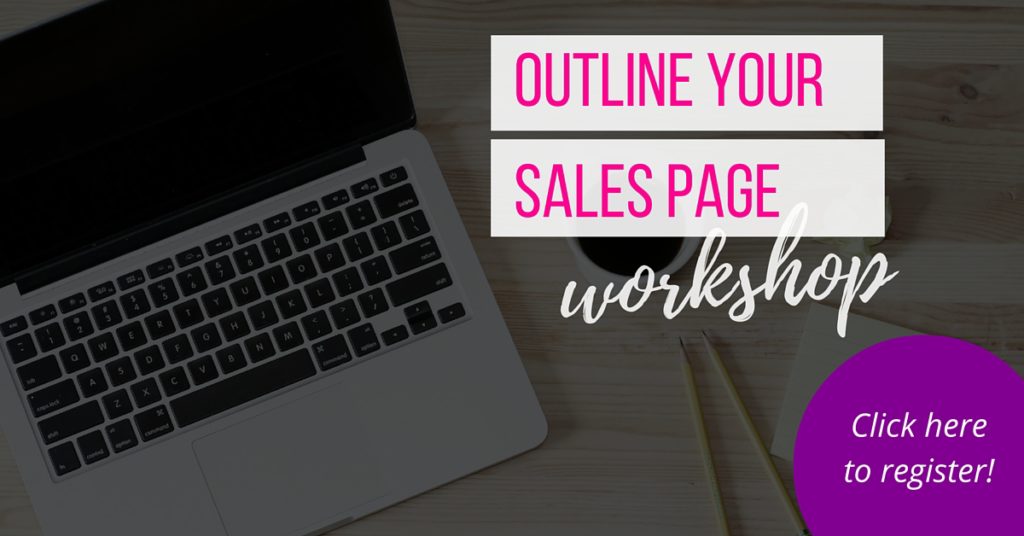3 Ways Your Money Blocks are Sabotaging Your Sales Page
As an entrepreneur, you know that the world is limitless. Where the average person sees reasons why change can never happen, you see opportunities.
As an entrepreneur, you’re probably also ignited by the idea of making the world a more beautiful, peaceful, wonderful place to live. Most of the business women I work with as both clients and colleagues have “giving back” on the top of their “why I do what I do” lists.
The thing is, it’s not always easy to navigate the world of solving problems for a profit.
Sometimes, charging money makes us feel uncomfortable. We start questioning whether we’re deserving enough, talented enough, good enough…
Being an entrepreneur, after all, means that you are making money to help people solve their problems.
And this whole “charging money for products and services” thing challenges us at the core of our being. I don’t know about you, but I’m constantly overcoming my own limiting beliefs about how much money I deserve to make.
One of my favorite lessons on blasting through limiting beliefs comes from the book The Big Leap by Gay Hendricks. In the book, Hendricks outlines the concept of an “Upper Limit Problem” — a self-imposed limit on how much success or money (or whatever) you believe that you’re allowed to have.
Here’s what Hendricks had to say about Upper Limit Problems in an article for Experience Life:
“Each of us has an inner thermostat setting that determines how much love, success and creativity we allow ourselves to enjoy. That thermostat setting usually gets programmed in early childhood. And, once programmed, our Upper-Limit thermostat setting holds us back from enjoying all the love, financial abundance and creativity that’s rightfully ours.”
If you’re familiar with the concept of Upper Limit Problems (ULPs), you won’t be surprised to learn that one place I see ULPs manifest themselves is in your sales page copy.
I get a unique view into the mindset of entrepreneurs like you because I have my clients write their own sales pages before I wave my copywriting magical wand over them for Sales Page CPR.
At first, it was surprising to me to see business owners doing nonsensical things in their copy. But when I started to ask my clients why they made certain decisions on their sales pages, it was always clear that the root cause of the craziness was always a subconscious upper limit.
Here are the 3 most common sales page sabotages. Pay attention because if your web copy isn’t converting as highly as you’d like, I’m sure you’re doing at least one of them!
Sabotage #1 – Putting the price at the top of the page
The biggest, brightest red flag that screams, “I don’t believe I deserve to make money” is when I go to a sales page and the first thing I see is the price… before I even know what the offer is!
When you put the price at the top of your sales page, it indicates that you feel bad about charging money. Even worse, it could indicate imposter syndrome or a feeling that you are “stealing” from people by charging them for your offers.
If you feel this way, don’t beat yourself up. I’m totally guilty of this and I’m constantly working to recognize these feelings of unworthiness.
The truth is that you are creating offers to help people solve their problems (and a little birdie told me that you’re very good at what you do, too!).
Why shouldn’t you put the price at the top of the page? The entire purpose of a sales page is to sell the offer. Don’t give the price until you’ve done that. (Watch this video to find out if you should put your prices on your website).
And that brings me to sabotage #2…
Sabotage #2 – Refusing to use the sales page formula
Look, I’m not trying to tell you that every sales page should be a cookie cutter format. Far from it!
Personally, I’m a hyper-creative individual. I value creativity and originality so much so that I (a) named my business “The Rule Breaker’s Club” and (b) am known for having existential crises because I’m trying so hard to reinvent the wheel.
The point is that I get it. I understand that you want your sales page to be creative and original. You don’t want to use some stupid “sales formula”.
But therein lies your sales sabotage: you assume that by using a framework or formula, you are being lazy and/or manipulative.
On that note, I’ve got great news:
Creativity works best with boundaries. @CourtRJ http://ow.ly/4mR9VJ ![]()
Have you learned my sales formula? It’s called the Rainbow of Sales and it can be applied to any sales situation and every piece of content you create.
The boundaries provided by something like the Rainbow of Sales or The Sales Page Kit (where I teach you the 14-part framework for sales pages) give your creativity room to breathe. These formulas show you how to present your offer in a way that allows the right person to see that it’s exactly what they need. There is absolutely zero manipulation, convincing, or “persuasion” necessary. (If there were, I would not be able to live with myself).
Sabotage #3 – Thinking you’re the center of the universe
Indulge me on this one, s’il vous plait. I know you don’t really think you’re the center of the universe… that’s why this is a sales sabotage! (Remember: these sabotages don’t make rational sense).
Though I’m being lighthearted, I do want to rattle your cage a bit with this one because I see it happen with almost every person I’ve ever worked with and I do not see this being discussed enough in the interweb business world.
When crafting your sales message, you must forget about yourself 100% and become your target client’s #1 advocate.
Now that you’ve developed the offer and are ready to sell it, no one cares what you want anymore.
But here’s the thing: I see so many entrepreneurs saying things like..
I don’t understand why people don’t see the value in my offer. It’s the best thing on the market… way better than so-and-so’s program that’s making 6-7 figures!
Or, when asked “Why did you design your program this way”, I’ve had numerous people tell me something along the lines of:
I’ve designed my offer this way because it’s what works best with MY schedule and I want recurring income.
Again, my lesson here is that nobody cares what you want!
I know it seems harsh, but if you can run with this lesson, it’ll be the best thing you’ve ever applied to your business.
When writing your sales page (or crafting your sales message), I want you to step outside of yourself and your personal attachment to your offer. Instead, ask yourself, “If I were the customer, would I buy this?”
Read your sales page as if you were your target client. @CourtRJ http://ow.ly/4mR9VJ ![]()
Go through your sales page section by section and ask, “What do I think about this? What more info do I need to see here? What info is irrelevant to me?”

Want to know exactly what to put on your sales page? I’ll show you at the “Outline Your Sales Page” workshop!
COURTNEY CHAAL
© Courtney Chaal 2024
Site Credit
Privacy Policy
Terms
Disclaimer
